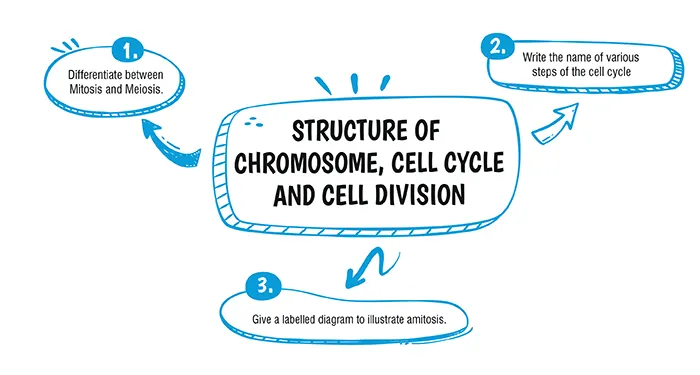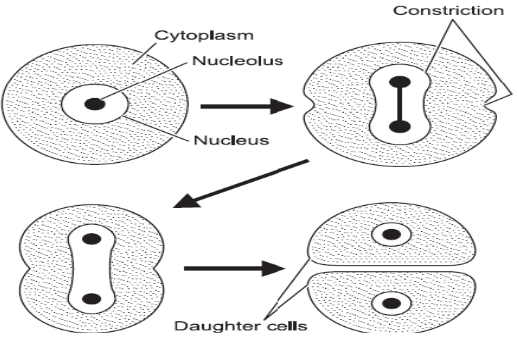Table of Contents

Ans. (a) Farmer and Moore
Explanation:
The term meiosis was coined by J. B. Farmer and J. E. Moore in 1905. It is derived from the Greek word meaning 'reduction'.
Ans. (b) Reduces
Explanation:
Meiosis is a type of cell division that reduces the number of chromosomes in the parent cell by half and produces four gamete cells.
Explanation:
| Mitosis | Meiosis |
|---|---|
| It occurs in somatic cells. | It occurs in germs cells. |
| It involves a single division resulting in two daughter cells. | It involves two successive divisions resulting in the formation of four daughter nuclei. |
| Prophase is short and simple. | Prophase is of longer duration and complex. |
| Number of chromosomes in daughter cells is equal to that of the parent cell. | Number of chromosomes in daughter cells is half to that of the parent cells. |
| It is also known as equational division. | It is also known as reductional division. |
| Mitosis brings about growth, repair and healing. | Meiosis forms gametes and spores and maintains the chromosome number in each cell division constant from generation to generation |
Explanation:

Explanation:

Download Mind Map of this chapter
Download NowWant to Practice Mock Tests of this chapter
Practice NowDownload Important Questions of this chapter
Download Now| Chapter No. | Chapter Name |
|---|---|
| Chapter 1 | Structure of Chromosome, Cell Cycle and Cell division |
| Chapter 2 | Genetics: Mendel's law of Inheritance |
| Chapter 3 | Absorption by Roots- The Processes Involved |
| Chapter 4 | Transpiration |
| Chapter 5 | Photosynthesis |
| Chapter 6 | Chemical Coordination in Plants |
| Chapter 7 | The Circulatory System |
| Chapter 8 | The Excretory System |
| Chapter 9 | The Nervous System and Sense Organs |
| Chapter 10 | The Endocrine System |
| Chapter 11 | The Reproductive System |
| Chapter 12 | Human Population |
| Chapter 13 | Human Evolution |
| Chapter 14 | Pollution |
CBSE Important Questions Class 10
ICSE Important Questions Class 10
CBSE Important Questions Class 10
ICSE Important Questions Class 10